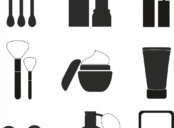Anti-aging Serum: The Ultimate Guide for Beauty Enthusiasts

Introduction:
As people age, their skin starts to show visible signs of aging such as fine lines, wrinkles, and age spots. This has led to the rise in popularity of anti-aging serums, which claim to combat these signs and provide a more youthful appearance. In this comprehensive guide, we will delve into the world of anti-aging serums, exploring what they are, how they have evolved over time, and what consumers need to know about them.
What is Anti-aging Serum?

Anti-aging serums are skincare products designed to target and alleviate the visible signs of aging. They typically contain active ingredients such as retinol, Vitamin C, and peptides that work to boost collagen production, improve skin texture, and reduce the appearance of wrinkles. Unlike moisturizers, serums have a lightweight consistency that allows for deeper penetration into the skin, delivering potent ingredients directly to the target areas.
Historical Evolution of Anti-aging Serum:
The use of anti-aging remedies dates back centuries, with ancient civilizations employing various techniques and substances to combat signs of aging. In ancient Egypt, for example, Cleopatra is said to have used a combination of milk and honey as a facial mask to maintain her youthful appearance. Fast forward to the modern era, the field of skincare science has made tremendous progress in developing more advanced and effective anti-aging serums.
– 1800s: The first anti-aging serums were mainly concoctions of natural ingredients such as plant extracts and essential oils. These serums aimed to provide hydration and temporarily improve the appearance of the skin.
– 1900s: As scientific advancements in skincare emerged, anti-aging serums started incorporating more scientifically proven ingredients. Retinol, a derivative of Vitamin A, gained popularity for its ability to stimulate cell turnover and reduce the appearance of wrinkles.
– 2000s: With the advent of technology and research, newer and more innovative ingredients were introduced to the world of anti-aging serums. Peptides, antioxidants, and hyaluronic acid became common additions, offering additional benefits such as increased collagen synthesis and improved moisture retention.
Factors to Consider when Choosing an Anti-aging Serum:
1. Skin Type: Different individuals have varying skin types, and it is essential to choose an anti-aging serum that is compatible with your skin type. If you have oily skin, opt for a lightweight, oil-free serum. Dry skin, on the other hand, will benefit from a serum with hydrating ingredients.
2. Ingredients: Look for key ingredients such as retinol, Vitamin C, hyaluronic acid, and peptides. These ingredients have been scientifically proven to be effective in reducing signs of aging.
3. Concentration: The concentration of active ingredients is crucial as it determines the efficacy of the serum. Higher concentrations may offer faster results but can also be more irritating, so it is important to start with lower concentrations and gradually increase as needed.
4. Price: Anti-aging serums can vary greatly in price, and it is crucial to find a balance between quality and affordability. Do your research and read reviews to determine the best value for your money.
5. SPF Protection: Some anti-aging serums now incorporate SPF protection, which is essential for shielding the skin from harmful UV rays that can accelerate aging.
How to Incorporate an Anti-aging Serum into Your Skincare Routine:
To maximize the benefits of your anti-aging serum, it is important to follow a proper skincare routine.
1. Cleansing: Start with a gentle cleanser to remove any impurities from the skin. This allows the serum to penetrate effectively.
2. Toning: Use a toner to restore the skin’s pH balance and prepare it for the serum.
3. Serum Application: Apply a small amount of the serum to your fingertips and gently massage it into your face and neck, focusing on areas prone to wrinkles.
4. Moisturize: Follow up with a moisturizer to lock in the serum and provide hydration to the skin.
5. Sun Protection: Finish with a broad-spectrum sunscreen to protect your skin from harmful UV rays.
Conclusion:
Anti-aging serums have come a long way in terms of formulation and effectiveness. With an array of scientifically proven ingredients, these serums offer a promising solution for those who wish to combat the signs of aging. By understanding the key factors to consider when choosing a serum and incorporating it into a comprehensive skincare routine, individuals can achieve a more youthful and radiant complexion.





















